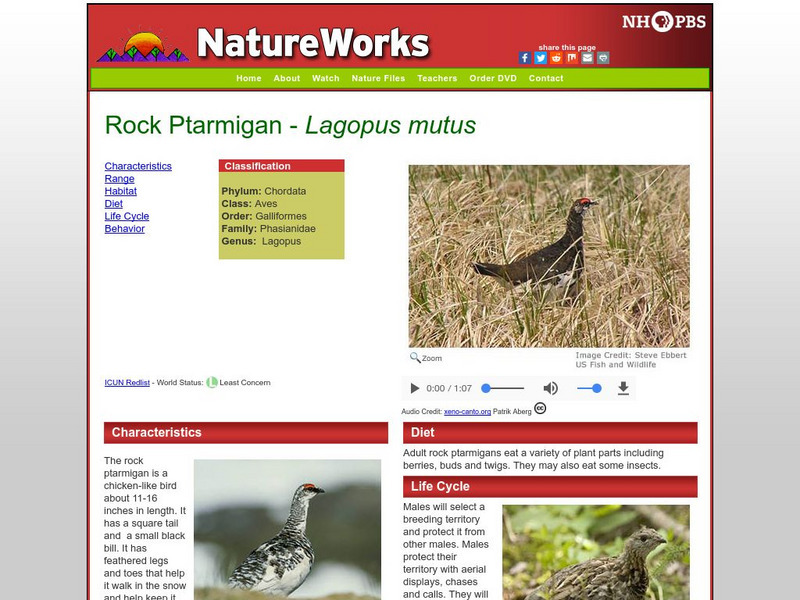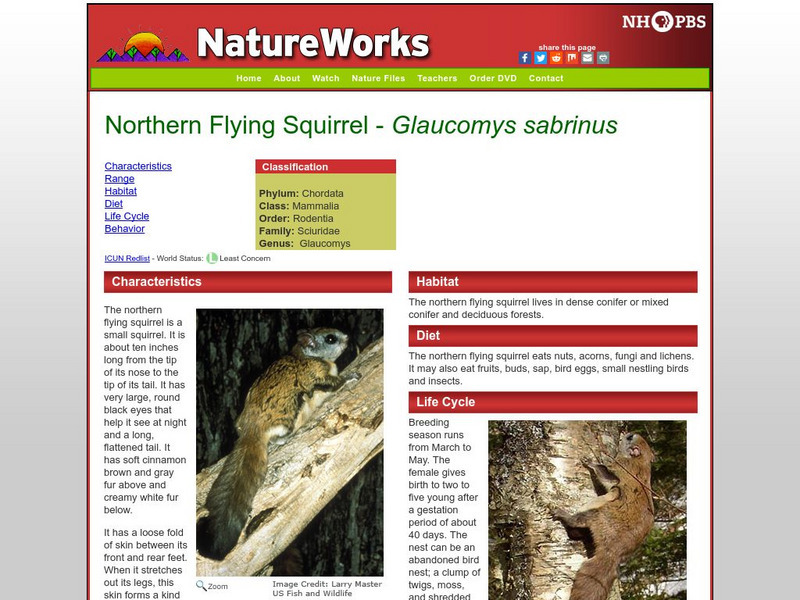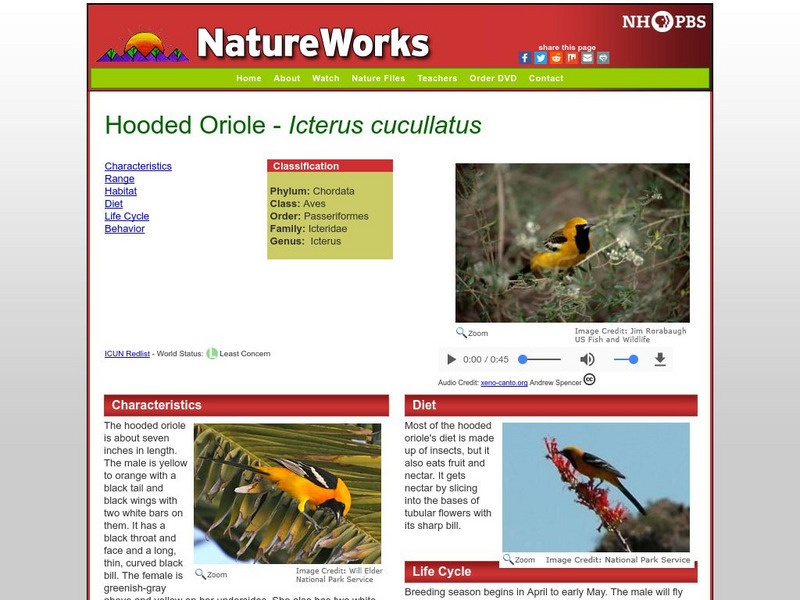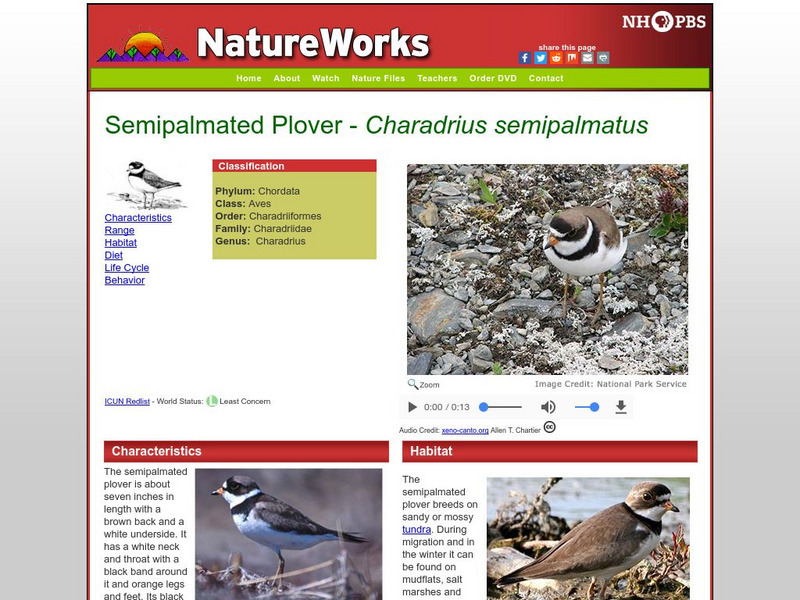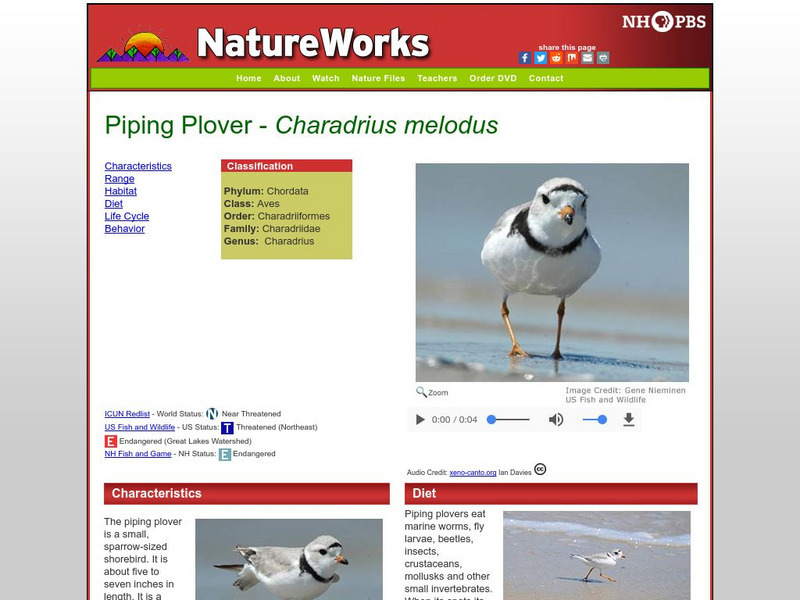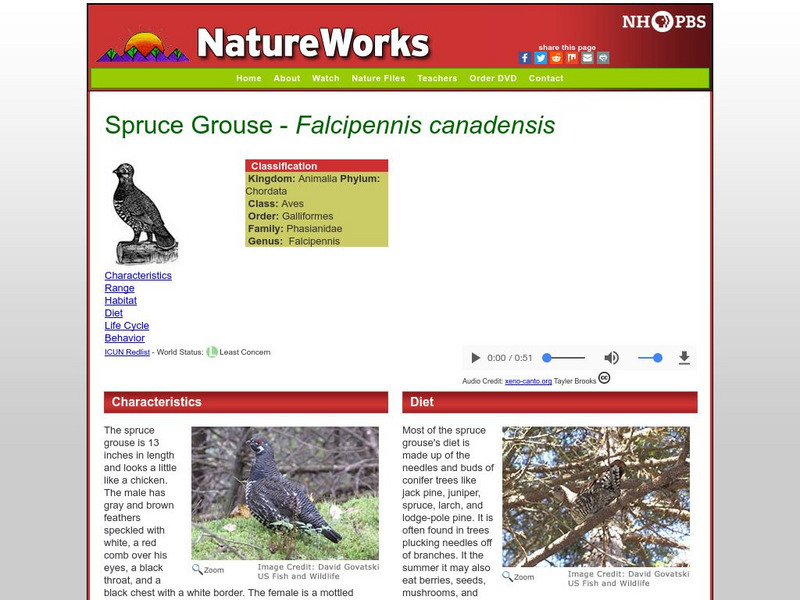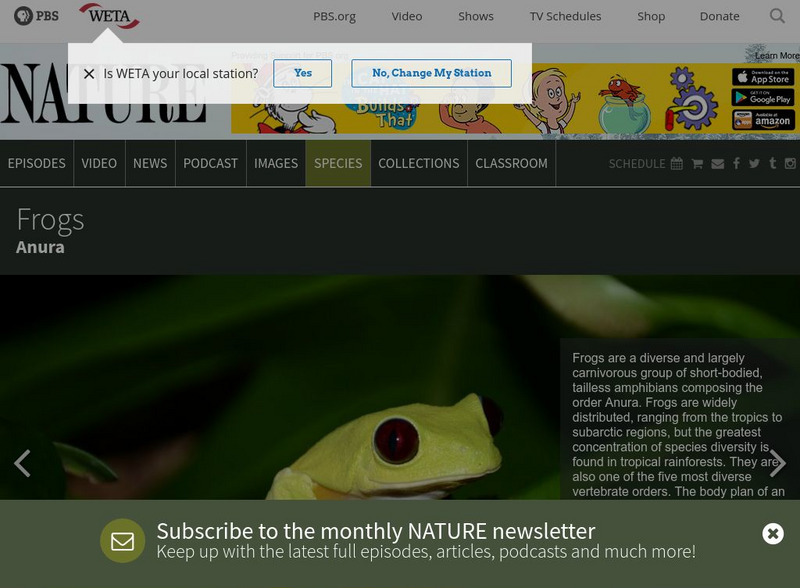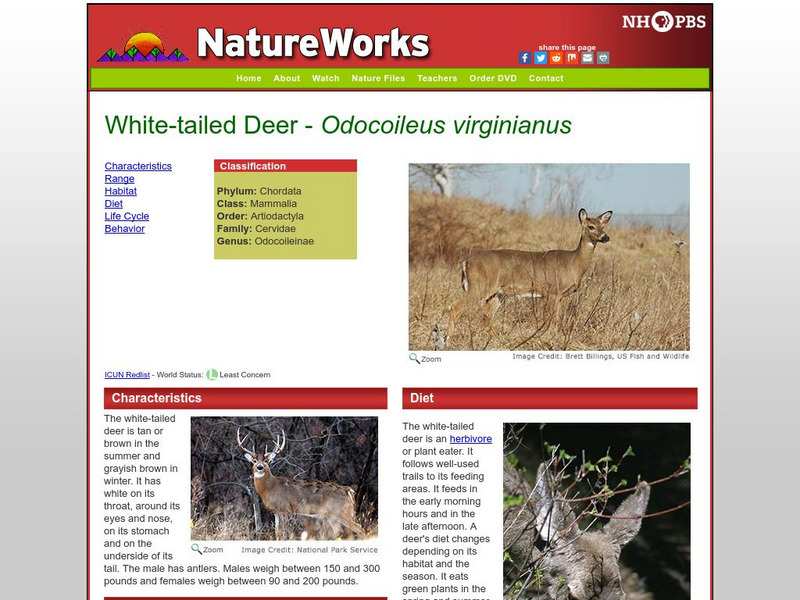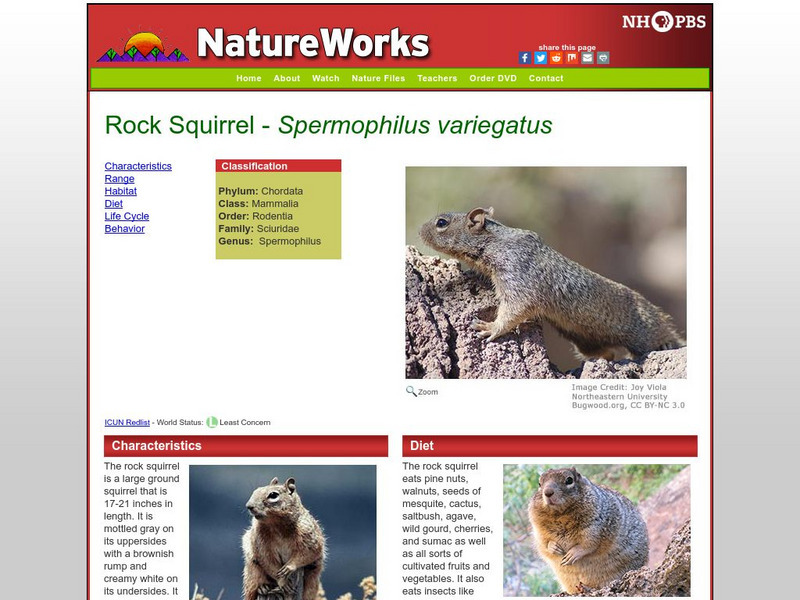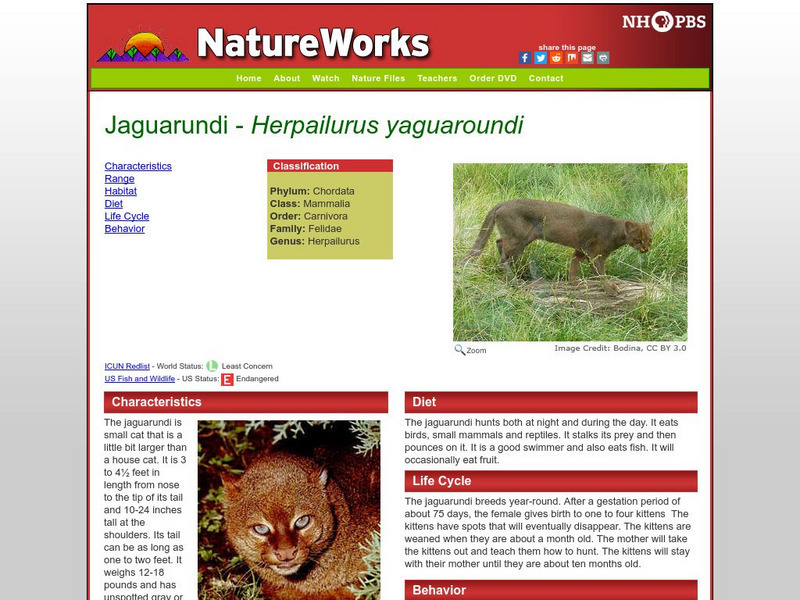Hi, what do you want to do?
National Wildlife Federation
Penguin Fun Facts
What's black and white and can dive up to 1,800 feet under water? That's right, penguins! Learn this and many other amazing facts about these unique birds with this handy reference sheet.
Wilderness Classroom
Pollution
Educate scholars on pollution—air, water, and land—with a series of lessons that begin with a thorough explanation of each type. Learners then take part in three activities to reinforce the importance of reducing pollution. They...
Channel 4 Learning
Channel 4 Learning: Science Essentials: Life Cycles
Learn about the life cycles of plants and animals then demonstrate what you know with activities, a quiz, and related resources.
A-Z Animals
A Z Animals: Reference: Life Cycles
Find out some common characteristics of animal life cycles across different types of species.
Other
Study of Northern Virgina Ecology: Black Carpenter Ant
Lots of information about the black carpenter ant. Learn about their physical characteristics, colonies, life cycle, food sources, and predators. A detailed chart listing many plants and animals permits exploration of their relationships...
University of Florida
Florida Museum of Natural History: Animals 2: Insects and Spiders
This teacher's guide focuses on the smaller animals that inhabit our world: insects and spiders. These fascinating creatures provide young children many hands-on opportunities to learn about the diversity of living things, how living...
PBS
Nh Pbs: Nature Works: Great Egret
Learn about the Great Egret through this Nature Works site. Students will access information about characteristics, life cycle, habitat, range, behavior and diet through this source.
PBS
Nh Pbs: Nature Works: Rock Ptarmigan
Discover how the Rock Ptarmigan lives in the Tundra when you check out this site. This resource features photographs, information on characteristics, life cycle and more.
PBS
Nh Pbs: Nature Works: Northern Flying Squirrel
This site provides a look at the Northern Flying Squirrel. Students and teachers can access information relating to behavior, characteristics, range, habitat, life cycle, and diet through this educational site.
PBS
Nh Pbs: Nature Works: Wolverine
Study the world of the Wolverine when you explore this informative source. The content of this resource includes characteristics, life cycle, diet, habitat, behavior and more of this member of the mustelid family.
PBS
Nh Pbs: Nature Works: Tricolored Heron
This site created by NatureWorks focuses on the Tricolored Heron. Learn more about this aquatic bird's characteristics, life cycle, diet, behavior, range and habitat through the exploration of this source.
PBS
Nh Pbs: Nature Works: Hooded Oriole
What makes the Hooded Oriole unique? Find out when you visit this educational resource featuring information ranging from diet and habitat to behavior and life cycle.
PBS
Nh Pbs: Nature Works: Northern Shoveler
This site created by NatureWorks focuses on the Northern Shoveler. The content of this resource includes a look at this species' characteristics, range, habitat, diet, behavior, and life cycle.
PBS
Nh Pbs: Nature Works: Semipalmated Plover
This site offers a clear and concise look at the Semipalmated Plover. The information covered in the source includes characteristics, habitat, life cycle, range, diet and behavior. You will also find clear photographs of this aquatic bird.
PBS
Nh Pbs: Nature Works: Yellow Crowned Night Heron
Come and check out this educational resource featuring the Yellow-crowned Night Heron. This site identifies the characteristics, life cycle, diet, habitat, range, behavior and photographs of this aquatic bird.
PBS
Nh Pbs: Nature Works: Piping Plover
What would you like to know about the Piping Plover? This site features information on this fascinating aquatic bird. The content includes characteristics, life cycle, habitat, diet, behavior and range.
PBS
Nh Pbs: Nature Works: Spruce Grouse
This resource provides you with a clear and concise look at the Spruce Grouse. Students will explore information ranging from characteristics and diet to life cycle and behavior.
PBS
Pbs Nature: Frogs and Toads
Do you know how to tell the difference between a frog and a toad? This site provides interesting facts and information about this type of amphibian from where they live to what they eat and more.
A-Z Animals
A Z Animals: Animal Facts: Saola (Pseudoryx Nghetinhensis)
Provides a photograph and fact card about the Saola, a type of antelope. Discusses their classification, where they are found, physical characteristics, distribution and habitat, behavior and lifestyle, life cycle, diet, predators,...
A-Z Animals
A Z Animals: Animal Facts: Serval (Leptailurus Serval)
Provides photographs and a fact card about the Serval, a type of cat. Discusses where they are found, physical characteristics and anatomy, distribution and habitat, behavior and lifestyle, life cycle, diet, predators, interesting facts,...
PBS
Nh Pbs: Nature Works: Eastern Chipmunk
Did you know the Eastern Chipmunk has white fur on its stomach and reddish-brown fur on its back? Come and explore this educational resource to learn more about this creature's diet, habitat, life cycle and more.
PBS
Nh Pbs: Nature Works: White Tailed Deer
Find out what makes the White-Tailed Deer unique when you explore this educational resource. This site identifies characteristics, life cycle, range, behavior, habitat and diet for this mammal.
PBS
Nh Pbs: Nature Works: Rock Squirrel
This site provides a look at the Rock Squirrel. Come and explore the characteristics, life cycle, diet, habitat, behavior and range of this fascinating rodent.
PBS
Nh Pbs: Nature Works: Jaguarundi
Learn more about the Jaguarundi through the exploration of this resource. The content of this site includes information on behavior, characteristics, life cycle, diet, range and habitat.











